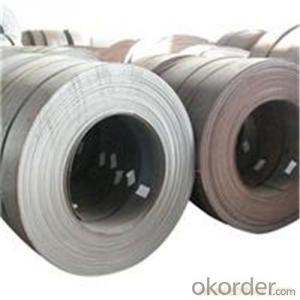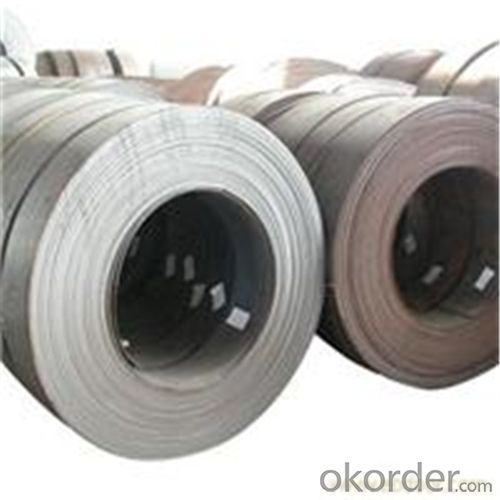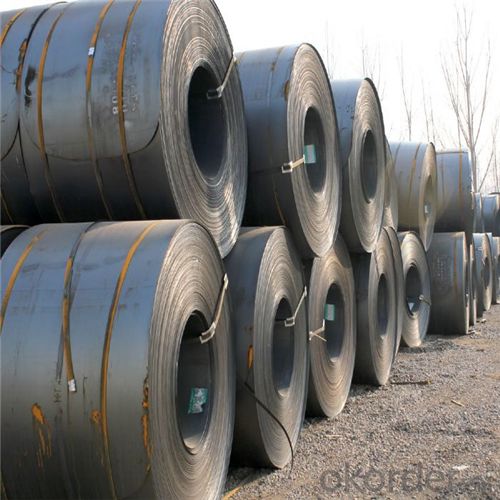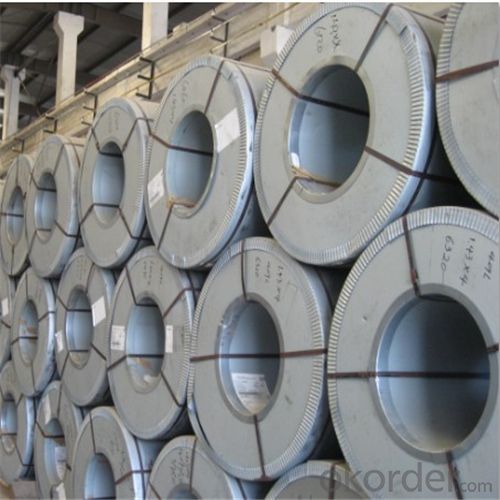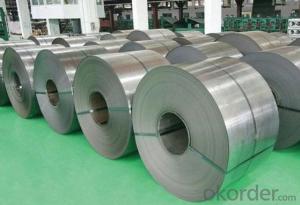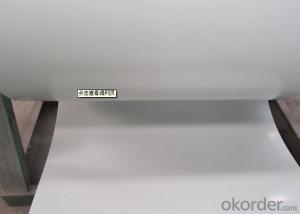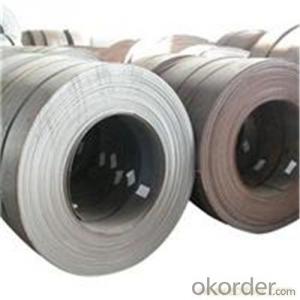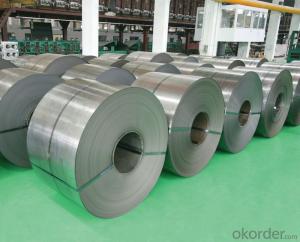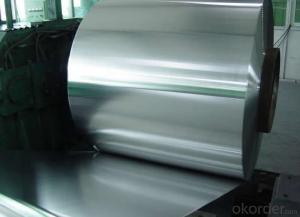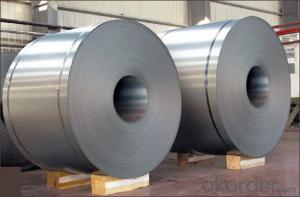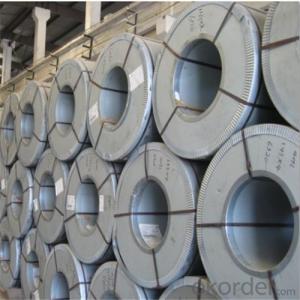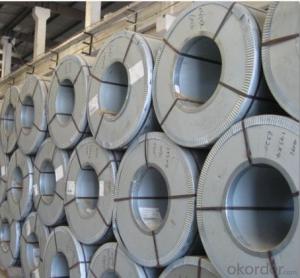Hot Rolled Steel Coil Used for Industry with the Much Attractive Price
- Loading Port:
- Tianjin
- Payment Terms:
- TT OR LC
- Min Order Qty:
- 50 m.t.
- Supply Capability:
- 20000 m.t./month
OKorder Service Pledge
OKorder Financial Service
You Might Also Like
Hot Rolled Steel Coil Used for Industry
1.Structure of Hot Rolled Steel Coil Description
Rolled to its final dimensions while it’s hot enough to scale, our hot-rolled steel is an amalgamation of the various qualities of steel. It can be in the form of plates, sheet and coils. Our Hot-Rolled Steel Sheets and Coils are applied to a wide range of uses such as automobile, electrical appliance, machinery manufacturing, container manufacturing, shipbuilding, bridge, pipeline, and receive high acclaim from our customers for its excellent quality.
2.Main Features of the Hot Rolled Steel Coil
•High Purity
•Easy control and operation
•High strength
•Fast melting
•Competitive price
•Best Service
3. Hot Rolled Steel Coil Images
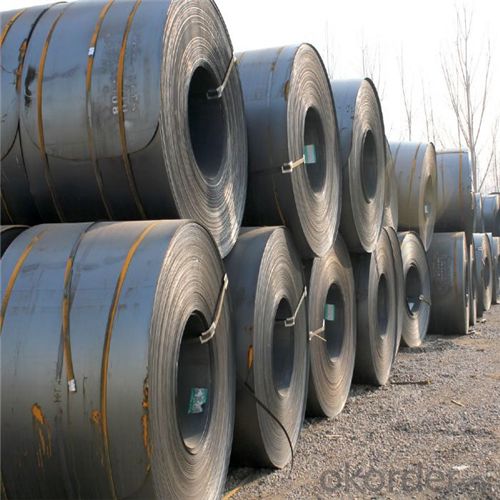
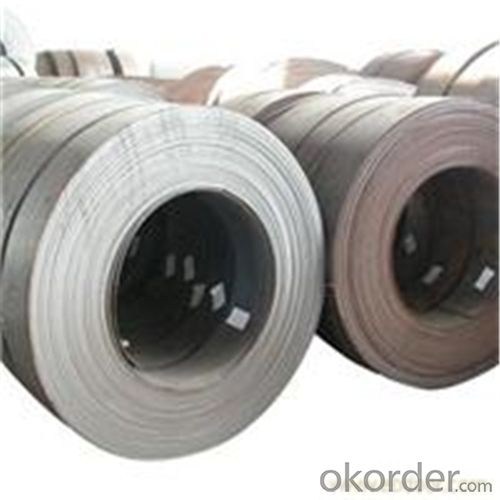
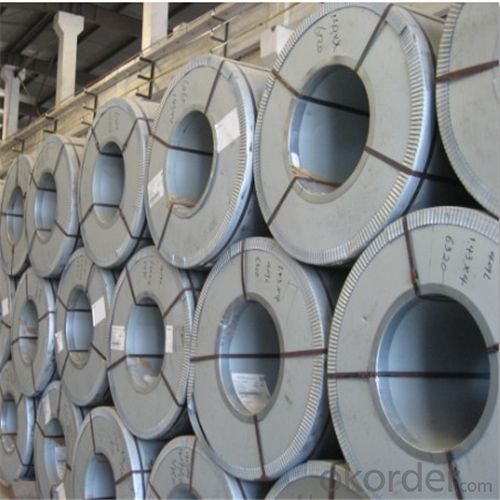
4. Hot Rolled Steel Coil Specification
HOT ROLLED STEEL COIL | |
Thicknenss | 1.5mm-25mm |
Width | 600mm-2000mm |
Sheets length | ---- |
Coil inner diameter | 762mm |
Surface treatement | ---- |
Coil weight | ---- |
5.FAQ of Hot Rolled Steel Coil
We have organized several common questions for our clients,may help you sincerely:
①How about your company?
A world class manufacturer & supplier of castings forging in carbon steel and alloy steel,is one of the large-scale professional investment casting production bases in China,consisting of both casting foundry forging and machining factory.
②How to guarantee the quality of the products?
We resolutely put an end to unqualified products flowing into the market. At the same time, we will provide necessary follow-up service assurance.
③How long can we receive the product after purchase?
In the purchase of product within three working days, We will arrange the factory delivery as soon as possible. The pecific time of receiving is related to the state and position of customers.Commonly 7 to 10 working days can be served.
- Q: What is the standard width of steel coils?
- The standard width of steel coils can vary depending on the specific industry and application. However, in general, the standard width for steel coils ranges between 36 inches to 72 inches. The specific width will depend on factors such as the type of steel being used, the intended use of the coils, and the equipment used for processing and handling the coils. It is important to consult industry standards and specifications to determine the appropriate width for a particular steel coil application.
- Q: What are the different types of steel coil surface defects?
- There are several different types of steel coil surface defects that can occur during the manufacturing or handling process. Some of the common types include: 1. Rust: Rust is a common surface defect that occurs when the steel coil is exposed to moisture or oxygen. It appears as a reddish-brown discoloration on the surface of the coil. 2. Scratches: Scratches are superficial marks that can occur during handling or transportation of the steel coil. They can vary in depth and severity, ranging from light surface scratches to deep gouges. 3. Stains: Stains are another type of surface defect that can occur due to exposure to chemicals or other substances. They can appear as discolored patches on the surface of the coil, and may be difficult to remove. 4. Roll marks: Roll marks are impressions or indentations that can occur during the rolling process. They are caused by uneven pressure or misalignment of the rolls, and can appear as lines or patterns on the surface of the coil. 5. Edge wave: Edge wave is a defect that occurs when the edges of the coil are not perfectly flat. It can cause the edges to appear wavy or uneven, and may affect the overall appearance and performance of the coil. 6. Oil spots: Oil spots are surface defects that occur when oil or lubricants used in the manufacturing process are not properly removed. They can appear as dark spots or patches on the surface of the coil, and may affect the adhesion of coatings or paints. 7. Pitting: Pitting is a defect that appears as small, shallow depressions or pits on the surface of the coil. It can be caused by factors such as corrosion, uneven cooling, or impurities in the steel. 8. Holes: Holes are more severe surface defects that can occur due to a variety of reasons, such as corrosion, mechanical damage, or manufacturing errors. They can range in size and can significantly affect the structural integrity of the coil. It is important to address these surface defects promptly to ensure the quality and performance of the steel coil. Regular inspections, proper handling, and appropriate surface treatments can help minimize the occurrence of these defects.
- Q: What are the different types of steel coil finishing machines?
- There exists a variety of steel coil finishing machines, each designed to accomplish specific tasks and attain desired outcomes. Some commonly encountered types are as follows: 1. Slitting Machines: These machines are employed to divide large steel coils into narrower strips of desired widths. They comprise a set of circular blades that cut through the coil as it progresses through the machine, resulting in multiple smaller coils or strips. 2. Cut-to-Length Machines: These machines are utilized to cut steel coils into specific lengths. They can be programmed to execute precise cuts at predetermined lengths, thereby ensuring accuracy and consistency. 3. Recoiling Machines: Recoiling machines are deployed to rewind steel coils into tightly wound, compact rolls. They are typically used to create smaller coils from larger ones or to recondition coils that have become loose or damaged. 4. Edging Machines: Edging machines serve the purpose of removing excess material from the edges of steel coils, thereby enhancing their overall appearance and ensuring uniform width throughout the coil. 5. Coating Machines: These machines are utilized to apply diverse coatings or finishes to the surface of steel coils, such as paint, galvanized coatings, or protective films. They often incorporate drying or curing systems to guarantee proper adhesion and durability of the applied coatings. 6. Packaging Machines: Packaging machines are employed to wrap or package steel coils for transportation or storage. They can envelop the coils in protective materials, such as plastic or paper, and secure them using strapping or other fastening methods. 7. Inspection Machines: These machines are used to scrutinize the quality and integrity of steel coils. They have the capability to detect defects, such as cracks, scratches, or surface irregularities, and provide feedback for the purpose of quality control. These examples merely scratch the surface of the diverse array of steel coil finishing machines available. Each machine serves a specific role in the steel coil finishing process, guaranteeing that the final product meets the desired specifications and quality standards.
- Q: How are steel coils inspected for coil set?
- Various methods and equipment are utilized to inspect steel coils for coil set. Coil set refers to the curvature or shape of the coil, which can affect its performance and usability in different applications. One way to inspect steel coils for coil set is through visual examination. Experienced operators or inspectors carefully assess the coils for any visible deformities or irregularities in their shape. This can be accomplished by unrolling a section of the coil and checking for signs of buckling, twisting, or unevenness. Visual inspection is a simple and cost-effective method to identify evident coil set issues. In addition to visual examination, more advanced techniques are employed to accurately measure and quantify coil set. One such technique involves using a straight edge or template. The straight edge is placed along the length or width of the unrolled portion of the coil, and any gaps or deviations from the straight edge indicate the presence of coil set. This method provides a more precise measurement of the extent and severity of the coil set. Another commonly used technique is the utilization of specialized tools like a non-contact laser measurement system. This system projects a line onto the surface of the coil using lasers and measures the distance between the line and the coil. Any variations in this distance indicate the presence of coil set. This method offers high accuracy and provides detailed data on the coil's shape and curvature. Other methods may involve the use of mechanical devices such as rollers or tensioners to unroll and measure the coil's shape. These devices exert controlled pressure on the coil to straighten it out, and any resistance or deviations encountered during the process serve as indications of coil set. Overall, the inspection of steel coils for coil set involves a combination of visual examination and precise measurement techniques. These methods aid in identifying and quantifying any deformities or irregularities in the coil's shape, enabling manufacturers and customers to make informed decisions about the usability and quality of the steel coils.
- Q: How are steel coils inspected for oil or rust residues using chemical analysis?
- Chemical analysis techniques can be employed to inspect steel coils for the presence of oil or rust residues. One widely used method is Fourier transform infrared spectroscopy (FTIR), which involves subjecting a small sample of the steel coil to infrared radiation and analyzing the resulting infrared spectrum. By identifying specific chemical bonds indicative of oil or rust residues, this technique can effectively detect their presence. For oil residue detection, a common approach is to examine the FTIR spectrum for a peak at approximately 2920 cm-1, which corresponds to the stretching vibration of C-H bonds in hydrocarbon chains. The observation of this peak signifies the existence of oil residues on the steel coil. To identify rust residues, the FTIR spectrum is scrutinized for characteristic peaks associated with iron oxide or hydroxide compounds. For instance, the presence of a peak at around 560 cm-1 suggests the presence of iron oxide (FeO) or iron hydroxide (Fe(OH)3). Apart from FTIR analysis, other chemical analysis techniques like X-ray fluorescence spectroscopy (XRF) or energy-dispersive X-ray spectroscopy (EDX) can also be employed. These methods provide information about the elemental composition of the steel coil, enabling the identification of specific elements linked to oil or rust residues, such as carbon or iron. In essence, the chemical analysis of steel coils for oil or rust residues offers a dependable and precise means of ensuring the coils' quality and cleanliness before further processing or utilization.
- Q: How are steel coils used in the production of metal ceilings?
- Steel coils are an essential component in the production of metal ceilings. These coils, which are typically made of high-quality steel, are used to create the base material for manufacturing metal ceiling panels. The first step in the process involves uncoiling the steel coils and feeding them into a roll forming machine. This machine gradually shapes the steel into the desired profile for the ceiling panels. The coils are passed through a series of rollers, which bend and shape the steel into the required dimensions and design. Once the steel has been shaped, it is then cut into individual panels of the desired length. These panels are then subjected to various finishing processes such as surface treatment, painting, or powder coating to enhance their appearance and durability. Steel coils are preferred in the production of metal ceilings due to their excellent strength and rigidity. They provide a sturdy foundation for the ceiling panels, ensuring their longevity and resistance to deformation. Moreover, steel coils offer superior fire resistance, making them a safe choice for use in commercial and industrial buildings. In addition to their structural benefits, steel coils also allow for a wide range of design possibilities. The malleability of steel allows manufacturers to create intricate patterns and textures on the surface of the ceiling panels, providing aesthetic appeal and enhancing the overall interior design. Overall, steel coils are an integral part of the production process for metal ceilings. They provide the necessary strength, durability, and versatility required for creating high-quality and visually appealing ceiling panels used in various commercial and residential spaces.
- Q: Hi all.I'm working on a project which requires about 3 steel pipes at 25mm in diametre and about a foot each in length.The qualities I need with the steel is that:1. I need it to be easy enough to weld together2. I need to be able to drill holes through them with a basic drill (I could buy different bits, that's fine)3. I need the steel to be able to take short intense repeated bursts of strain through said holes4. The lighter the steel the better5. Could I please have a ballpark figure for price. I can't imagine such a small amount of steel would cost too muchThank you in advance for your replyRegardsSean
- For a structural product you want tubing instead of pipe. ERW (Electric resistance welded) steel tubing is generally a fairly good compromise between cost and strength. They are available in various wall thicknesses for either lighter weight or greater strength. DOM (dimensioned over mandrel) tubing generally uses a stronger steel allow and is more dimensionally uniform but the cost is much higher. These products are probably available at a local steel supplier. They are both mild steel so they can be arc welded or brazed with ease. Strength of these steel alloys is generally about 70,000 psi so you need to analyze the specific applied stress over the specific surface area to determine what wall thickness you need. If you are applying tension or compression to pins in holes in the tubing, you could braze in hardened steel bushings. You would bore a larger hole in the tubing in which to insert the bushing. Bushings would distribute the force over a significantly larger surface area and the holes will not tend to elongate.
- Q: More specifically steel wire (around 1/8 diameter). I'm doing a science fair project where I'm testing if concrete encased in steel has more fire resistance than steel by itself. However, I have no idea what the dimensions of concrete encased steel is so I can't scale down. And if I did have the dimensions I wouldn't know how to encase it around the steel wire (do I just poor concrete over it (heck I've never even used concrete)? Thanks for any help.
- If you're designing this structure, I recommend not filling it with concrete. It will do very little for stiffness (steel is 7-8 times stiffer than concrete), almost nothing for strength (unless buckling of the steel cylinder is an issue), and will add lots of unnecessary weight.
- Q: can steel boil and turn into a gaseous state?? if so how hot does it have to be for it to boil
- The amount of heat needed can be generated. The heat on the surface of the sun is sufficient. Steel will break down before it gets that hot. The carbon in the steel will oxidize into carbon dioxide, or vaporize into carbon gas. The outer core of the Earth is composed of molten iron and nickel. Its also done in steel plants every day.
- Q: How are steel coils weighed?
- Steel coils are usually weighed using industrial scales or weighing machines. These scales are specifically designed to handle the heavy weight of steel coils and provide accurate measurements. The coils are placed on the scale, and the weight is determined based on the pressure exerted on the scale's sensors.
Send your message to us
Hot Rolled Steel Coil Used for Industry with the Much Attractive Price
- Loading Port:
- Tianjin
- Payment Terms:
- TT OR LC
- Min Order Qty:
- 50 m.t.
- Supply Capability:
- 20000 m.t./month
OKorder Service Pledge
OKorder Financial Service
Similar products
Hot products
Hot Searches
Related keywords
